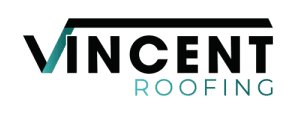Diversity and inclusion have been one of the priorities of companies all over the world. The largest business institutions have initiated programs on Diversity and Inclusion to ensure that their employees are composed of varied talents at all governance levels.
There are those who follow mandates by the government while there are those who have worked on it based on their initiatives. As a team, we treat others equally and with the utmost respect. These two important traits are observed in our organization, day in, and day out.
Comparing Diversity and Inclusion
In order to see how diversity and inclusion look like in a modern workplace, these two should be differentiated.
The Human Resources department of large corporations is tasked to ensure that the company hires, retains, develops, and promotes diverse peoples. There are different forms of diversity—age, religion, sexual orientation, gender, and others. Diversity in a workplace involves respecting and appreciating these differences.
Each employee in an organisation has his own sets of beliefs, ideas, thoughts, and perspectives that can contribute to the institution. The modern workplace should be able to promote that each of these differences must be valued and respected in order to build a better work environment.
Inclusion differs from diversity in that it is the effort of the company to treat employees equally and make them feel welcome. Employees who feel that they are welcome to reach their potential and have higher levels of commitment.
There are different steps that can transform a passive to an active strategy on diversity and inclusion in the workplace. We already are in the implementation of an active strategy on diversity and inclusion.

#1 -Let employees take the lead in the diversity and inclusion program.
Employees know what they want. They have an idea of how to be treated and are in a great position to assist in creating a diversity and inclusion program. Most Human Resources departments outsource training to companies who run initiatives without checking what their employees want.
A good starting point is to conduct a survey or ask employees to join in an open forum on the current workplace environment. We started from the grassroots level and then went up to ensure that all governance levels are heard and respected.
#2 – Use appropriate inclusive terminology.
People are sensitive when it comes to labelling them. Thus, a company must use inclusive language as a standard.
An example of inclusive terminology would be Aboriginal and Torres Strait Islander peoples for indigenous Australians. Another would be HBCU which means Historically Black Colleges and Universities. These were started after the American Civil War.
#3 – Give importance to the unique experiences of employees
Employees rally to have a company culture that prioritises them as individuals. When companies acknowledge that success can be reached through different pathways, this signals that the company values inclusion. One career obstacle is requiring a college degree is a requirement. Sometimes, valuing experience over this can be a good step in diversity and inclusion programs. Focusing on career progression tracks is another way of how diversity and inclusion look in a modern workplace.
#4 – Conduct regular monitoring of the diversity and inclusion programs in the company.
It is a must that programs should be checked on a regular basis. If there is no checking, programs die a natural death.
Here are some questions that can be asked by employers:

- Do employees feel welcome?
- What is the profile of all of the workforce?
- Do employees feel appreciated?
- Do top management listen to the concerns of the middle management and the grassroots level?
- Is fair recruitment practised?
- How are feedbacks processed?
Diversity and inclusion is a concern that is one of the topmost priorities of any organisation. Improving programs related to these can greatly improve employee engagement and commitment. Letting employees take the lead, using appropriate inclusive terminology, giving importance to employee experience, and regular monitoring are some ways on how diversity and inclusion look like in the modern workplace of ours.
If you have any questions about our new roofs, replacements or re-roofing services, give us a call on 📞0432 660 047.





